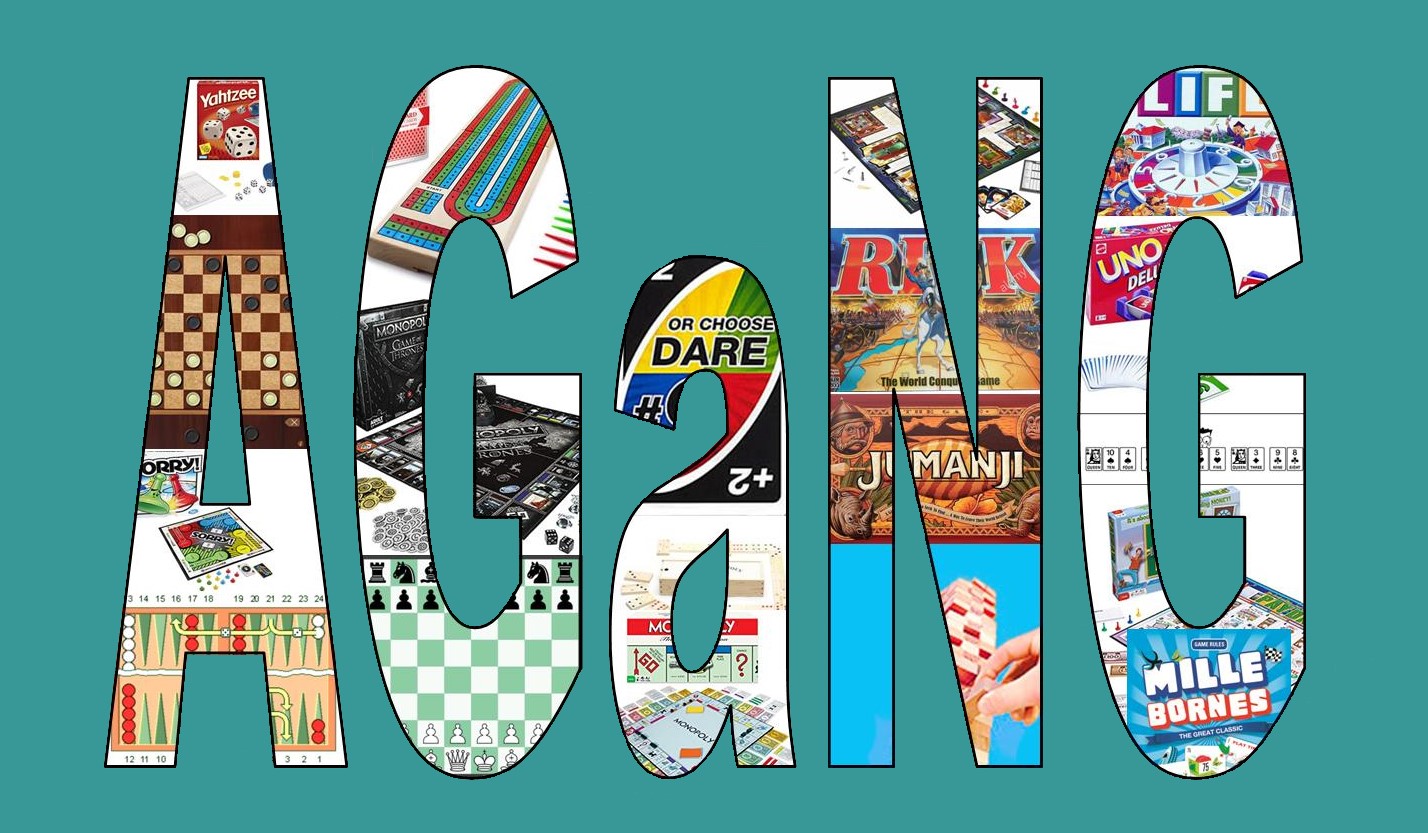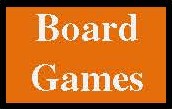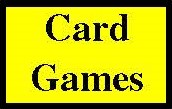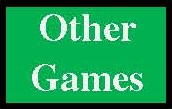Phase 10 Flip
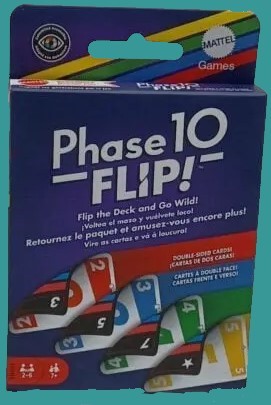
Objective
The objective of Phase 10 Flip! is to be the first player to complete all ten phases.
Setup
- Each player takes a reference card and places it face up in front of themselves. Any extra reference cards are set aside.
- Make sure all of the cards are facing the same direction. All of the cards color side (has white border) should face one way.
- Choose a player to shuffle the cards. They will deal ten cards to each player. They should deal the cards so the color side is facedown. Place the remaining cards so the color side is facedown. These cards form the draw pile.
- Each player should pick up their cards so they can see the color side of the cards. The wild side should face the other players.
- Turn over the top card from the draw pile so its color side is face up. This card forms the discard pile. If you reveal a Flip card, ignore its ability.
- The player to the left of the dealer starts the game. Play moves clockwise / left during the game.
How to Play Phase 10 Flip!
Each of your turns in Phase 10 Flip! consist of four steps:
- Draw a card
- Lay down a Phase if you can
- Play cards on completed Phases
- Discard a card
After you have completed all four steps, your turn ends. Play passes to the player on your left.
Drawing a Card
You will begin each of your turns in Phase 10 Flip! by drawing a card. When drawing a card, you can choose to take the top card from the draw pile or the discard pile. After you take a card, you will add it to your hand making sure that the card is facing the same way as the rest of the cards in your hand. For example if all of your cards are on the color side, you need to make sure your new card is also on its color side.
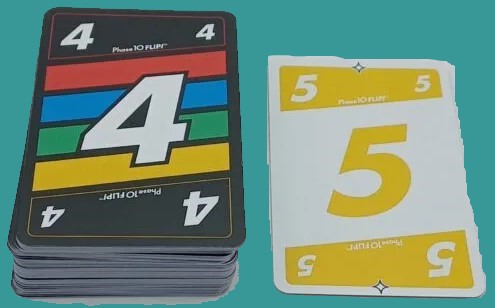
To start their turn this player can either take the yellow five from the discard pile, or they can take the top card from the draw pile. If they choose the draw pile they will take the wild four card and flip it to the other side when they add it to their hand.
What is a Phase?
During each round of the game you will try to complete the current Phase you are on. In the first round each player is trying to complete Phase one. Once you complete a Phase, you will move onto the next Phase in the next round. Say you complete Phase one in the first round. In the second round you will try to complete Phase two.
There are two different ways that you can play cards
Sets are created by playing two or more cards of the same number. The color of the cards don’t matter. For example you create a set when you play two or more 5 cards.
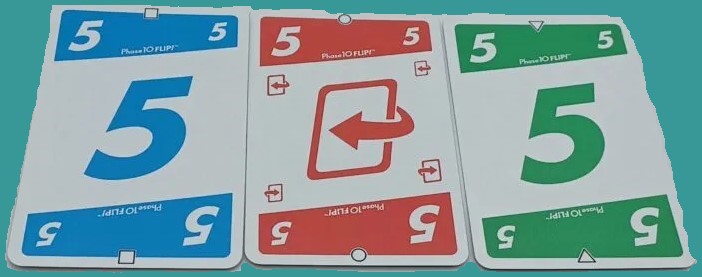
This player has played a set of three consisting of three 5 cards.
Color runs consist of two or more cards in consecutive numerical order of the same color. For example you can make a color run of three by playing a green 3, 4, and 5.
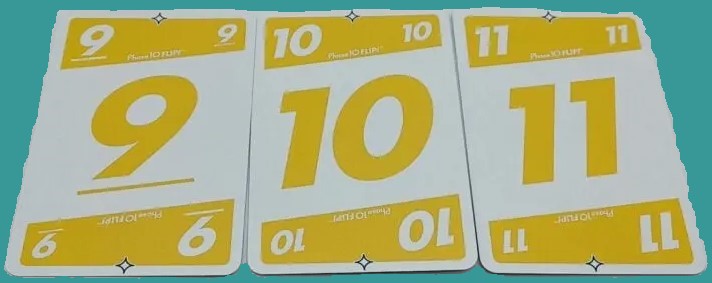
This player has created a color run of three featuring the yellow 9, 10, and 11.
The ten phases in Phase 10 Flip! are as follows:
- Two color runs of 2
- One color run of 2 and one set of 2
- One color run of 2 and one set of 3
- One color run of 3 and one set of 2
- One color run of 4 and one set of 2
- Two color runs of 3
- One color run of 3 and one set of 3
- One color run of 5 and one set of 2
- One color run of 2 and one set of 4
- One color run of 3 and two sets of 2
Special Cards in Phase 10 Flip!
Most of the cards on the color side are a specific color and have a number on them. These cards have no special ability, and just act as the color and number on the card. There are a couple unique cards in Phase 10 Flip! though.
Note: When using star cards there is no limit to how many you use. You need to use at least one number card in the Phase though.
Special Cards in Phase 10 Flip!
Most of the cards on the color side are a specific color and have a number on them. These cards have no special ability, and just act as the color and number on the card. There are a couple unique cards in Phase 10 Flip! though.
Note: When using star cards there is no limit to how many you use. You need to use at least one number card in the Phase though.
Any cards played to the table as part of a Phase stay on their current side.
Stars on Color Side
Cards with a star symbol are wild. The star represents any number so you can use it as a sort of wild card. You can pick any number for the card when you play it. You cannot change the color of the card though. It has to be whatever color is on the card.
Stars on Wild Side
Star symbols on the wild side of the cards are especially powerful. These cards can act as any number and color. You can pick the number and color for the card when you play it.
Wild Side Numbers
Numbers on the wild side of the cards have no designated color. You must play the card as the number printed on the card. You can choose the color for the card when you play it though.
Laying Down a Phase
After you draw a card, you will move onto trying to play a Phase. Depending on what Phase you are currently on, you will have to try and find a color run(s) and/or set(s) from the cards currently in your hand.
Once you have all of the cards needed to complete your current Phase, you can play them out in front of you. You cannot play any cards from your hand until you have all of the cards needed to complete your current Phase. You can only use the side of the cards that are currently visible to you.
The rules don’t specifically say whether you can hold a Phase in your hand until a future turn. In some sections of the instructions it implies you have to play the Phase whenever you have it in your hand. For example it says If you are able to make a Phase with the cards in your hand, lay the Phase down, faceup on the table. Later in the instructions it describes a player that has completed a Phase and then says that they may lay it down. This implies that you don’t have to play it right away. Because the rules can be interpreted both ways, the players should agree on whether you have to play a Phase as soon as you acquire it.
After you lay down a Phase, it remains in front of you for the rest of the round. No player may remove any cards from the Phase. Once you play the Phase, you receive credit for completing it even if you don’t end up winning the round. If you don’t complete your current Phase before the current round ends, you will have to try and complete the same Phase in the next round.
You can only make one Phase each round. Once you have completed your Phase for a round, you will try to get rid of the rest of your cards by hitting.
Play Cards on Completed Phases
After you have played your Phase for the round, you have more freedom in playing cards. If you have not completed your Phase yet, you will skip this step.
Look at all of the remaining cards in your hand and compare them to the cards already played. You can now play cards from your hand to any set or color run already played to the table. This includes sets and color runs played by yourself and the other players.
During this step you are trying to play the rest of the cards from your hand. When you play a card in this step, it is called “hitting”. You can play as many cards as you want from your hand during this step as long as you follow placement rules. You may also play cards to multiple different sets and or color runs. When adding to a set, the number of the card you play has to match the number of the set.
When playing to a color run, the card has to match the color of the run and it has to either be one higher or one lower than cards on the edges of the run. For example if a color run currently has a yellow 4, 5 and 6; you can play a yellow 3 or 7. Once you play one of those cards, you can play additional cards in numerical order.
Once Flip cards have been played, the side of the cards in your hand may not match the face up side of the cards played to the table. This doesn’t matter. You can mix cards from both sides when adding to sets and color runs. Should a color side card be added to a color run that was made completely of wild side cards though, the color run becomes the color of the card that is added to the run. For example say there is a color run of 1, 2, 3 and the cards are on the wild side. If a player adds a red four to the color run, the run will now be red for the rest of the round.
Discard a Card
After you are done playing cards, you will choose one card from your hand to discard. You will place the card with the current side face up on the discard pile. Should you choose to discard a Flip card, you will flip all of the cards to the other side.
Ending a Round
A round ends once a player plays all of the cards from their hand. You can get rid of your last card by hitting and adding cards to already played sets or color runs, or by discarding your final card.
The player who plays the last card from their hand wins the round. The winner of the round and any other players who completed their current Phase moves onto the next Phase in the next round. If you did not complete your Phase before the end of the round, you will have to try and complete the same Phase in the next round.
All of the players then tally their scores for the round. The winner scores zero points for the round. Every other player scores points for each card remaining in their hand. Cards already played to the table do not score any points. You will score the side of each card that is currently in play. The number of points you score for each card is as follows:
- Numbers 1-9: 5 points each
- Numbers 10-12: 10 points each
- Stars: 20 points each
Each player writes down how many points they scored in the current round. After all of the points have been recorded, the next round begins. The player to the left of the previous dealer becomes the dealer in the next round. The dealer picks up all of the cards and shuffles them to form the deck for the next round. The dealer needs to make sure all of the cards are facing the same way before they start shuffling.
Winning Phase 10 Flip!
The game ends when a player completes phase ten and the current round ends.
If only one player has completed the tenth Phase, they win the game.
If two or more players complete Phase 10, compare the points scored by each player that completed Phase 10. The tied player with the least points wins the game. In the rare case that there is still a tie, the ties players will replay the tenth Phase to determine the winner. The first player to create Phase 10 and go out, wins the game.
Arizona Gay Nude Games
